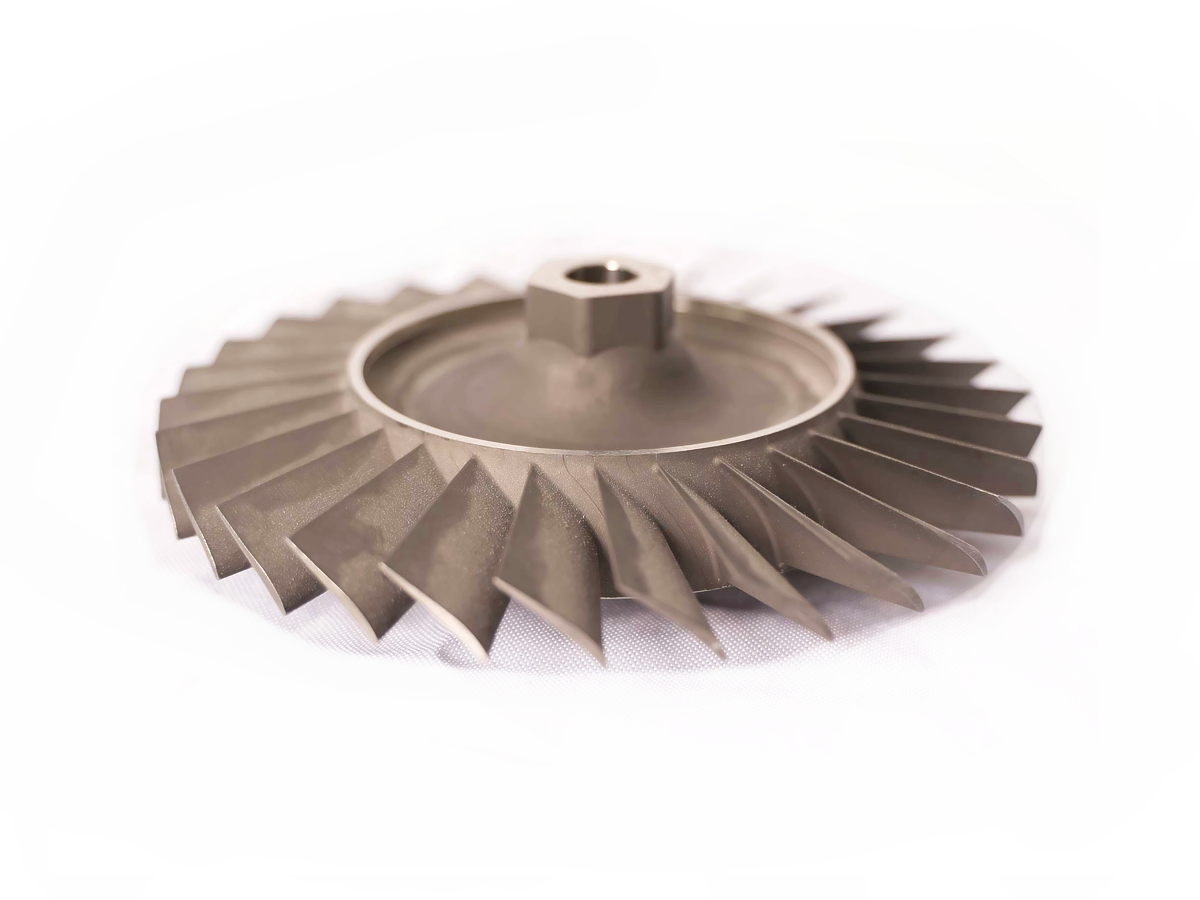Advanced CNC Machined Parts for Reliable Nuclear Power Plant Operations
Introduction to CNC Machined Components in Nuclear Energy
In nuclear power generation, safety, precision, and reliability are paramount. Advanced CNC machined components are critical in consistently meeting these stringent requirements. With tolerances as tight as ±0.005 mm, exceptional surface finishes, and materials capable of withstanding extreme conditions—such as high temperatures (up to 1000°C), intense radiation, and corrosive environments—CNC machining is indispensable for producing critical reactor components, turbine parts, fuel handling systems, and control assemblies within the nuclear, power generation, and industrial equipment sectors.
Leveraging cutting-edge CNC machining technologies, nuclear industry manufacturers achieve precise, durable, and compliant components that enhance operational reliability, safety, and efficiency, significantly reducing downtime and maintenance costs.
Material Comparison for Nuclear Power Plant Components
Material Performance Comparison
Material | Tensile Strength (MPa) | Radiation Resistance | Corrosion Resistance | Typical Applications | Advantage |
|---|---|---|---|---|---|
1240-1450 | Excellent | Outstanding | Reactor internals, turbine components | High temperature and corrosion resistance | |
485-620 | Good | Excellent | Piping systems, cooling system parts | High corrosion resistance, weldability | |
790-900 | Excellent | Exceptional | Chemical processing components | Superior corrosion and radiation resistance | |
900-1000 | Good | Excellent | Lightweight structural components | High strength-to-weight ratio, corrosion-resistant |
Material Selection Strategy for Nuclear CNC Machined Parts
Selecting appropriate materials for nuclear components involves evaluating radiation exposure, thermal stability, corrosion resistance, and mechanical properties:
Reactor internals, turbine blades, and components exposed to extreme heat (up to 700°C) and radiation significantly benefit from Inconel 718 due to its superior high-temperature strength, corrosion resistance, and radiation tolerance.
Cooling systems, piping, and components exposed primarily to corrosive coolant environments typically use Stainless Steel SUS316L, providing reliable corrosion resistance and excellent weldability for safe and leak-free performance.
Components operating in aggressive chemical environments, such as chemical control systems, significantly benefit from Hastelloy C-276, offering outstanding corrosion and radiation resistance.
Structural elements and load-bearing parts requiring strength, lightweight properties, and corrosion resistance often utilize Titanium Alloy Ti-6Al-4V, ensuring reduced weight and improved system efficiency.
CNC Machining Process Analysis for Nuclear Industry Components
CNC Machining Processes Performance Comparison
CNC Machining Technology | Dimensional Accuracy (mm) | Surface Roughness (Ra μm) | Typical Applications | Key Advantages |
|---|---|---|---|---|
±0.003-0.01 | 0.2-0.6 | Complex reactor components, turbine blades | High accuracy, intricate geometries | |
±0.005-0.01 | 0.4-1.6 | Fuel rods, valves, cylindrical components | Excellent dimensional stability | |
±0.002-0.005 | 0.1-0.4 | Precision fuel handling systems, control rods | Exceptional precision, material versatility | |
±0.002-0.005 | 0.05-0.2 | Sealing surfaces, bearing components | Ultra-precise surface finishes |
CNC Machining Process Selection Strategy for Nuclear Components
Choosing the ideal CNC machining processes for nuclear components is based on accuracy, complexity, surface quality, and functionality:
Reactor core components and intricate turbine blades needing tight tolerances (±0.003-0.01 mm) and complex geometries significantly benefit from Multi-Axis CNC Milling, providing precise, consistent quality.
Cylindrical nuclear components, including fuel rods and valves requiring high dimensional accuracy (±0.005-0.01 mm), efficiently utilize CNC Turning, ensuring dimensional stability and reliability.
Components with intricate internal geometries, such as fuel handling systems and precision control rods (±0.002-0.005 mm tolerance), significantly benefit from EDM machining, offering high precision without mechanical stress.
Precision sealing surfaces, bearing interfaces, and high-tolerance mating components requiring ultra-precise finishes (Ra ≤0.2 μm) and tight tolerances (±0.002-0.005 mm) benefit from CNC Grinding, ensuring safety-critical reliability.
Surface Treatment Solutions for Nuclear Power Components
Surface Treatment Performance Comparison
Treatment Method | Radiation Resistance | Corrosion Resistance | Max Operating Temp (°C) | Typical Applications | Key Features |
|---|---|---|---|---|---|
Excellent | Excellent (~1200 hrs ASTM B117) | 350 | Reactor internals, piping | Reduced contamination, smooth finish | |
Good | Excellent (~1000 hrs ASTM B117) | 300 | Cooling systems, piping | Enhanced corrosion resistance | |
Excellent | Outstanding (~1500 hrs ASTM B117) | 500 | Control assemblies, critical valves | Superior wear and corrosion resistance | |
Excellent | Excellent (~1200 hrs ASTM B117) | 550 | High-wear components | Improved fatigue life and hardness |
Surface Treatment Selection Strategy for Nuclear CNC Parts
Surface treatments for nuclear industry components must improve corrosion, radiation resistance, and wear properties:
Reactor internals and piping components requiring a smooth, contamination-resistant surface often select electropolishing, which enhances cleanliness and corrosion resistance.
Cooling system components benefit significantly from Passivation, enhancing corrosion resistance and preventing stress corrosion cracking.
Control assemblies, critical valves, and components under high operational stress significantly benefit from PVD coatings, maximizing component longevity and operational reliability.
Nitriding is ideal for high-wear components like turbine components and valves, improving fatigue resistance, hardness, and operational lifespan.
Quality Control Standards for Nuclear CNC Machined Components
Quality Control Procedures
Dimensional inspections with Coordinate Measuring Machines (CMM) and optical metrology systems.
Surface roughness and micro-finish analysis using advanced profilometers.
Mechanical testing (tensile, hardness, fracture toughness) following ASTM and ASME nuclear standards.
Radiation resistance and corrosion testing under simulated operational conditions.
Non-destructive testing (ultrasonic, radiographic, eddy-current) to confirm structural integrity.
Comprehensive traceability documentation complied with ISO 9001, ASME NQA-1, and nuclear industry regulatory requirements.
Industry Applications of CNC Machined Nuclear Components
Typical Applications
Reactor vessel internals and structural supports.
Precision turbine blades and high-pressure valves.
Nuclear fuel handling equipment and assemblies.
Control rods and safety-critical assemblies.
Related FAQs:
Why is CNC machining essential in nuclear power plant operations?
Which materials are optimal for nuclear CNC components?
What CNC machining processes ensure the highest precision in nuclear applications?
How do surface treatments enhance nuclear component reliability?
What quality standards govern CNC machined nuclear components?

